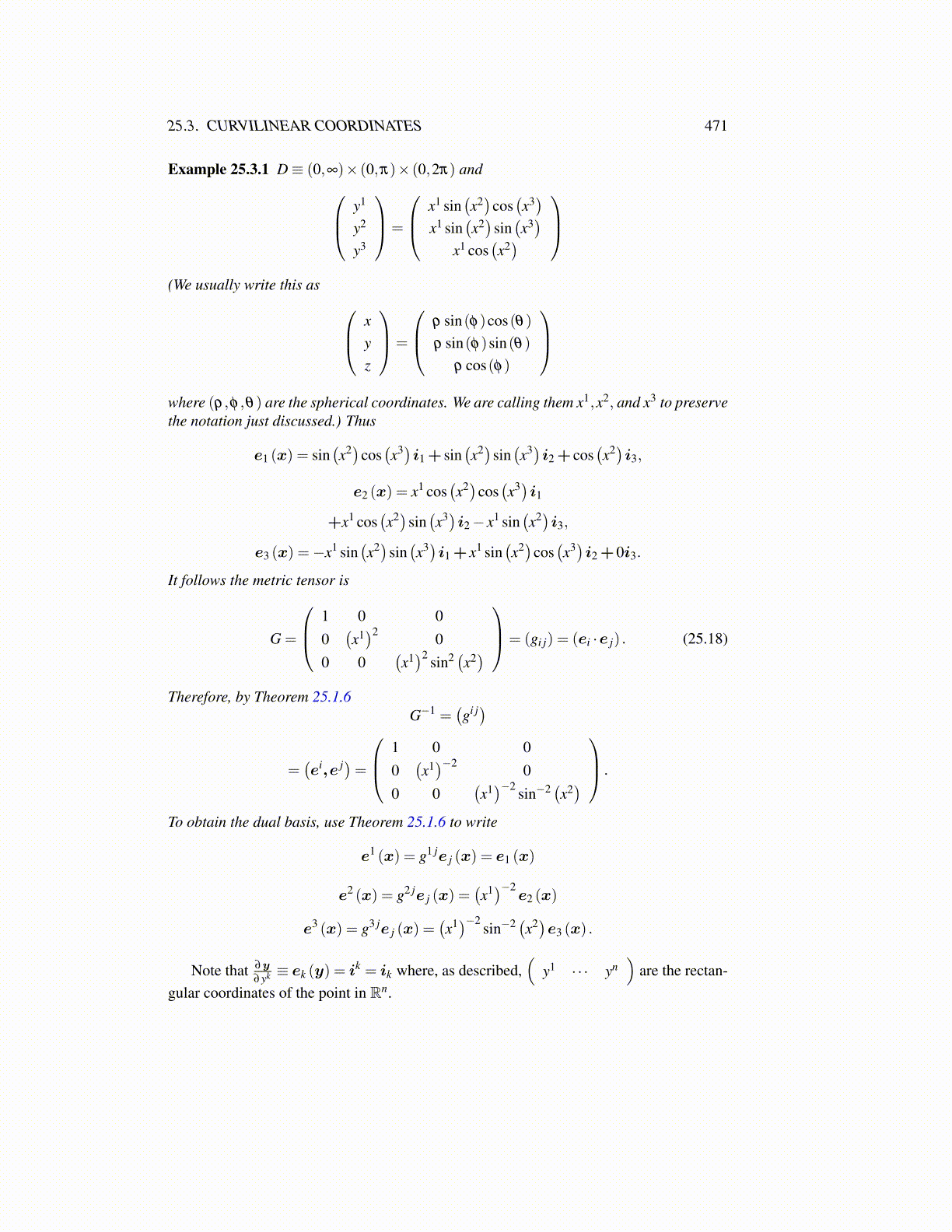
25.3. CURVILINEAR COORDINATES 471
Example 25.3.1 D≡ (0,∞)× (0,π)× (0,2π) and y1
y2
y3
=
x1 sin(x2)
cos(x3)
x1 sin(x2)
sin(x3)
x1 cos(x2)
(We usually write this as x
yz
=
ρ sin(φ)cos(θ)ρ sin(φ)sin(θ)
ρ cos(φ)
where (ρ,φ ,θ) are the spherical coordinates. We are calling them x1,x2, and x3 to preservethe notation just discussed.) Thus
e1 (x) = sin(x2)cos
(x3)i1 + sin
(x2)sin
(x3)i2 + cos
(x2)i3,
e2 (x) = x1 cos(x2)cos
(x3)i1
+x1 cos(x2)sin
(x3)i2− x1 sin
(x2)i3,
e3 (x) =−x1 sin(x2)sin
(x3)i1 + x1 sin
(x2)cos
(x3)i2 +0i3.
It follows the metric tensor is
G =
1 0 00(x1)2 0
0 0(x1)2 sin2 (x2
)= (gi j) = (ei ·e j) . (25.18)
Therefore, by Theorem 25.1.6G−1 =
(gi j)
=(ei,e j)=
1 0 00(x1)−2 0
0 0(x1)−2 sin−2 (x2
) .
To obtain the dual basis, use Theorem 25.1.6 to write
e1 (x) = g1 je j (x) = e1 (x)
e2 (x) = g2 je j (x) =(x1)−2
e2 (x)
e3 (x) = g3 je j (x) =(x1)−2
sin−2 (x2)e3 (x) .
Note that ∂y
∂yk ≡ ek (y) = ik = ik where, as described,(
y1 · · · yn)
are the rectan-gular coordinates of the point in Rn.